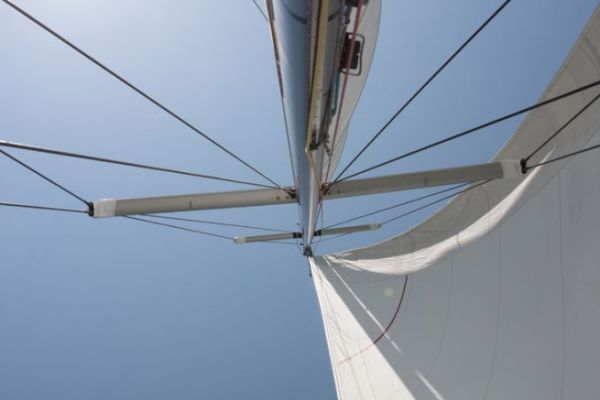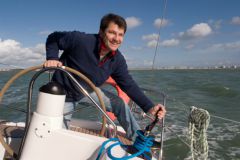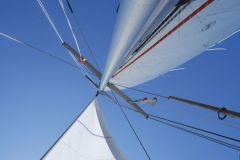On a modern sailboat, the standing rigging groups together all the fixed cables ensuring the stability and orientation of the mast. Unlike running rigging, which is used for sail handling, these elements remain under permanent tension. Their adjustment has a direct influence on mast stability, sail shape and safety at sea. Here is a glossary of the six main components, numbered according to an identification diagram.
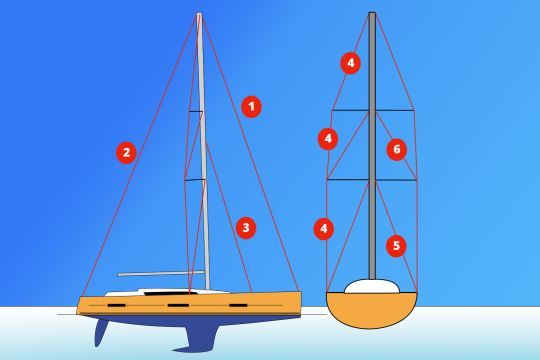
1. Strut: longitudinal forward support
The forestay connects the masthead to the stem. It counteracts the aft thrust of the backstay and serves as a tack for the genoa or jib. Depending on the type of rigging (head or split), it may come to rest at the top or lower down the mast. Its tension influences mast rake and headsail hollow.
2. Backstay: rear tension
Running from the top of the mast to the stern, the backstay balances the forestay tension. On some yachts, it is doubled, split or fitted with a hoist or hydraulic cylinder for adjustment. Note that the mast's permanent bend and initial rake are not dependent on the backstay on rigs with pushing spreaders (as shown in our diagram). Only the shroud settings influence these parameters.
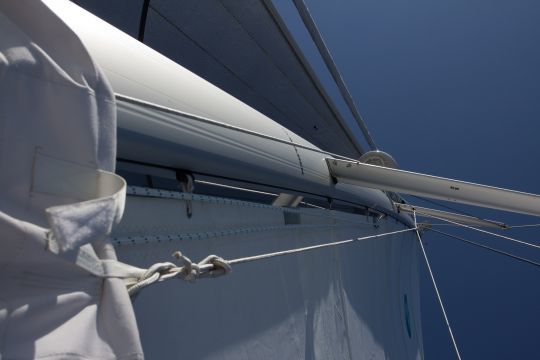
3. Forestay: support for the lower part of the mast
Fixed lower than the main forestay, it connects the middle of the mast to a chainplate on the foredeck. Its function is to limit mast recoil in waves, especially on fractional rigs.
4. Cap shrouds: lateral mast support
These long shrouds running from the deck to the masthead, sometimes referred to as V1, V2 and V3 depending on the spreader stages, support the mast in the transverse axis. They run from the masthead or intermediate points and attach to the chainplates on the sides of the boat. Their tension ensures the mast's verticality and limits lateral buckling.
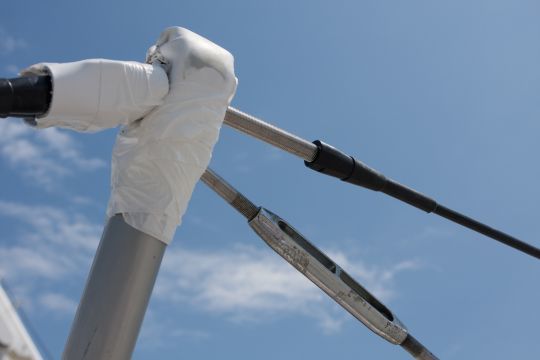
5. Lower shrouds: low lateral stability
Anchored at the first spreader level, they prevent the lower part of the mast from bending sideways. Their adjustment influences the stiffness of the lower mast section and the distribution of forces between the cap shrouds and the other shrouds.
6. Inter: intermediate link
The inter connects an intermediate point on the mast to a chainplate, completing the shroud and lower shroud system. Its mission is to stabilize a precise section of the mast, between two sets of spreaders, and maintain the rig's overall geometry.

 /
/ 